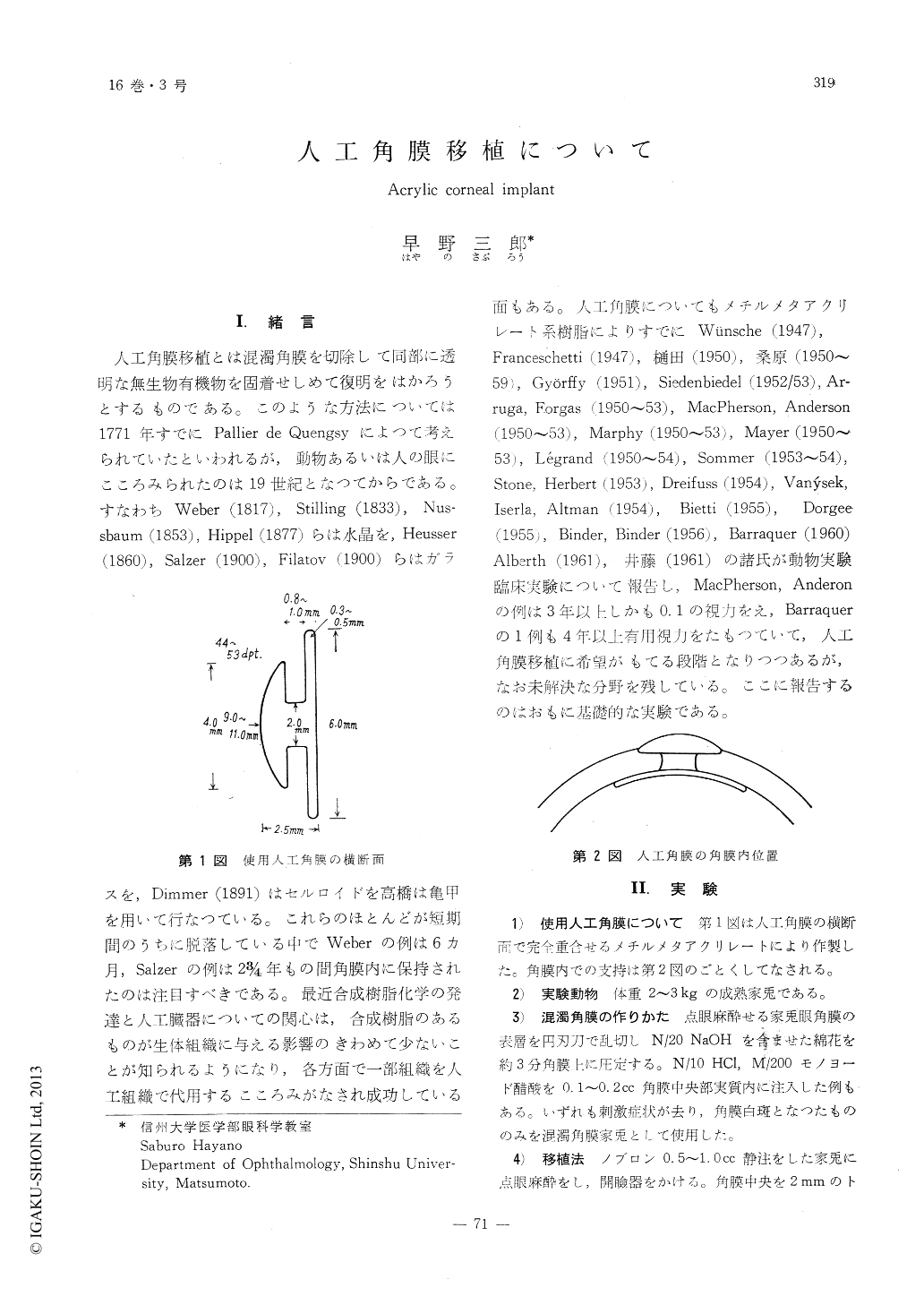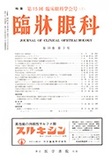Japanese
English
- 有料閲覧
- Abstract 文献概要
- 1ページ目 Look Inside
Ⅰ.緒言
人工角膜移植とは混濁角膜を切除して同部に透明な無生物有機物を固着せしめて復明をはかろうとするものである。このような方法については1771年すでにPaliier de Quengsyによつて考えられていたといわれるが,動物あるいは人の眼にこころみられたのは19世紀となつてからである。すなわちWeber (1817), Stilling (1833), Nus—sbaum (1853), Hippel (1877)らは水晶を, Heusser(1860),Salzer (1900), Filatov (1900)らはガラスを,Dimmer (1891)はセルロイドを高橋は亀甲を用いて行なつている。これらのほとんどが短期間のうちに脱落している中でWeberの例は6カ月,Salzerの例は23/4年もの間角膜内に保持されたのは注目すべきである。最近合成樹脂化学の発達と人工臓器についての関心は,合成樹脂のあるものが生体組織に与える影響のきわめて少ないことが知られるようになり,各方面で一部組織を人工組織で代用するこころみがなされ成功している面もある。
Twenty-two acrylic corneas have been inserted in 22 rabbit eyes. A corneal implant of the Dorgee-Barraque type was used (anterior surface diameter: 4mm, posterior surface diameter: 6mm, optic portion : 2mm, thickness 2.5mm, as shown in figure). Twelve of the above eyes were clear corneas and the others were clouded corneas with treated acid or alkali. The conserved implants were 4 of 12 clear corneas and 6 of 10 clouded corneas. The expelled implants caused by inclimination of implant, infection, reccurent iritis, and secondary glaucoma Histological changes were slight except lysis of the tief layer of cornea around the implant.

Copyright © 1962, Igaku-Shoin Ltd. All rights reserved.


